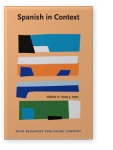Vol. 17:3 (2020) ► pp.391–414
Le dije yo, digo
Construccionalización de los introductores cuotativos con el verbo decir en español peninsular y argentino
El presente estudio examina la forma y la función de los introductores cuotativos con el verbo decir, a saber, secuencias utilizadas para introducir diálogo construido en el discurso, en el español peninsular y argentino. Se identifican y se investigan varias diferencias morfosintácticas y distribucionales entre las dos variedades en cuanto a la expresión y posición de los argumentos del verbo, así como la referencia temporal del verbo cuotativo. Los resultados apuntan hacia un nivel más alto de construccionalización de los introductores cuotativos en la variedad peninsular que en la argentina. Además, la variedad peninsular cuenta con marcadores cuotativos invariables digo y dice, que no ocurren en la variedad argentina. Proponemos que los marcadores cuotativos se consideren como un subtipo independiente de marcadores del discurso.
Article outline
- 1.Introducción
- 2.Marco teórico: Construccionalización y efectos de frecuencia
- 3.Datos y métodos
- 4.Análisis
- 4.1Expresión y posición de argumentos del verbo decir
- 4.2Tiempos verbales y referencia temporal
- 4.3Marcadores cuotativos
- 4.4Uso de cuotativos en el lenguaje adolescente en Madrid y Buenos Aires
- 5.Discusión y conclusiones
- 5.1Introductores y marcadores cuotativos: ¿un tipo de marcadores discursivos?
- 5.2Consideraciones finales
- Notas
-
Bibliografía -
Referencias
Article language: Spanish
